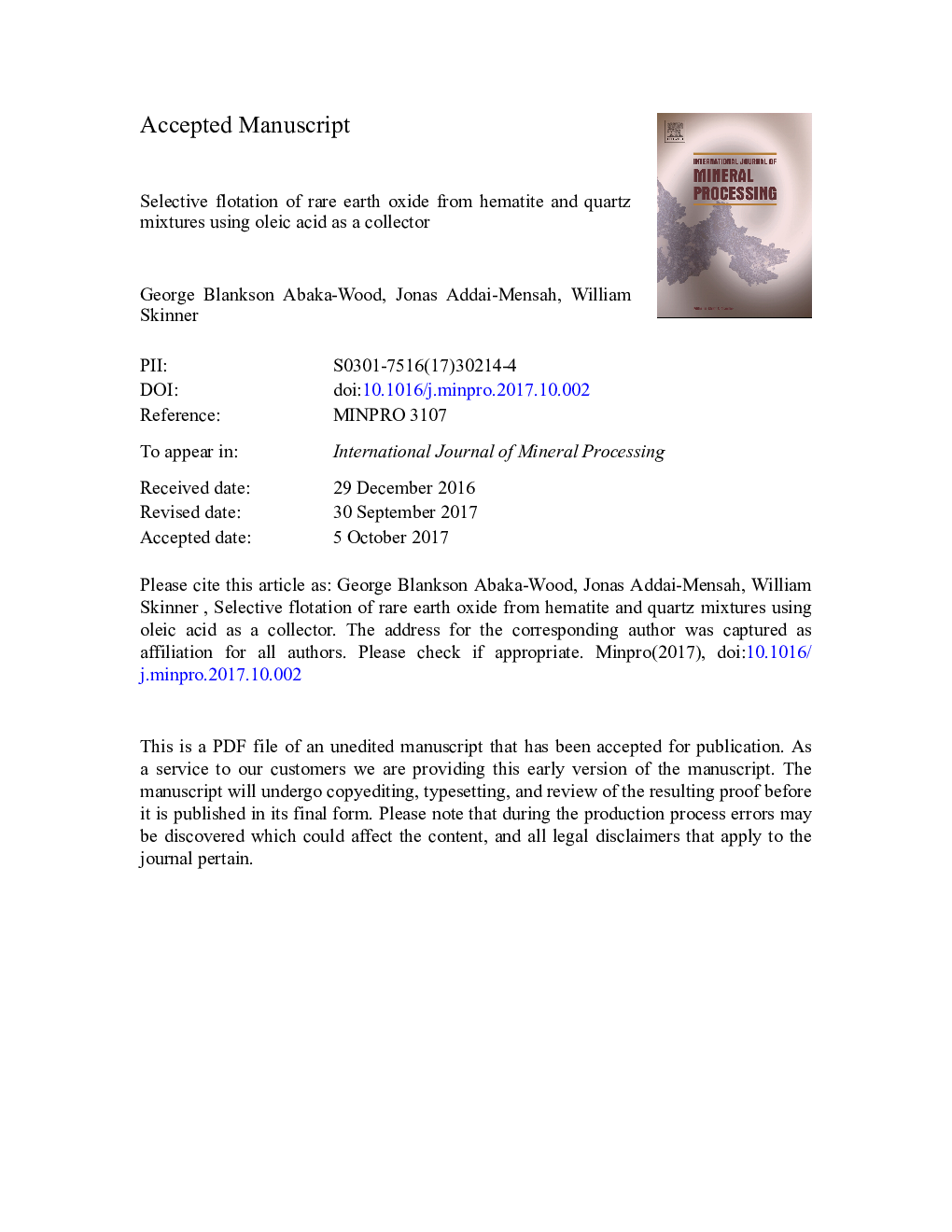| Article ID | Journal | Published Year | Pages | File Type |
|---|---|---|---|---|
| 6659358 | International Journal of Mineral Processing | 2017 | 19 Pages |
Abstract
Flotation, which exploits the differences in the surface wettability of minerals to effect separation, has been crucial in rare earth elements (REE) beneficiation. Monazite, a phosphate mineral commonly containing REE (typically lanthanum, cerium, and neodymium), occurs in association with hematite and quartz gangue minerals in some low grade deposits. In this study, the physicochemical properties including contact angle, zeta potential, and floatability of monazite, hematite, and quartz were determined in the presence of oleic acid as a collector. Contact angle measurements indicated adsorption of oleic acid onto the minerals' surfaces. Zeta potential measurements were used to elucidate oleic acid adsorption mechanism onto the mineral particle surfaces. Results from zeta potential measurements indicated that depressants are required to achieve selective flotation recovery of monazite from hematite and quartz. The flotation test results confirmed poor selectivity between monazite; and hematite and quartz, respectively. However, rare earth oxides (REO) in monazite floated better than both hematite and quartz at all the oleic acid dosages investigated. The use of sodium silicate and starch as depressants enhanced the selective flotation recovery of REO from hematite and quartz mixtures.
Related Topics
Physical Sciences and Engineering
Chemical Engineering
Chemical Engineering (General)
Authors
George Blankson Abaka-Wood, Jonas Addai-Mensah, William Skinner,
